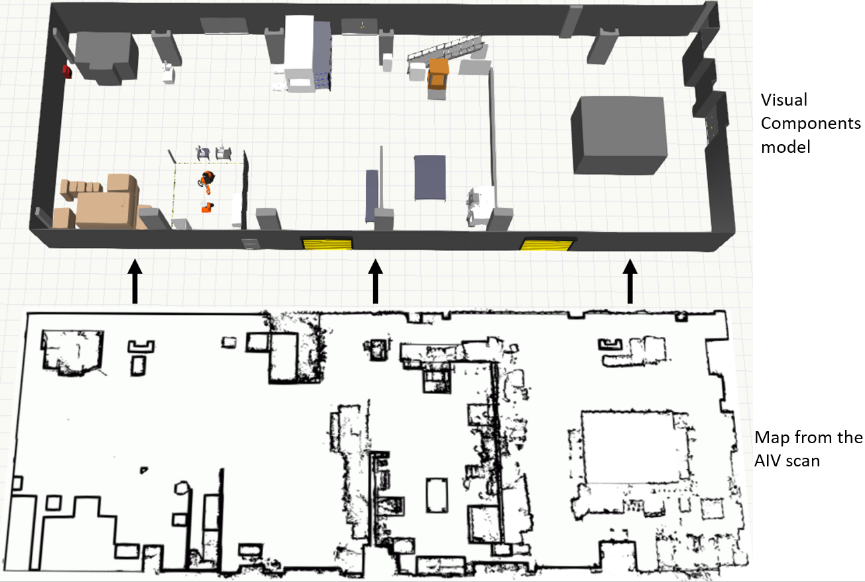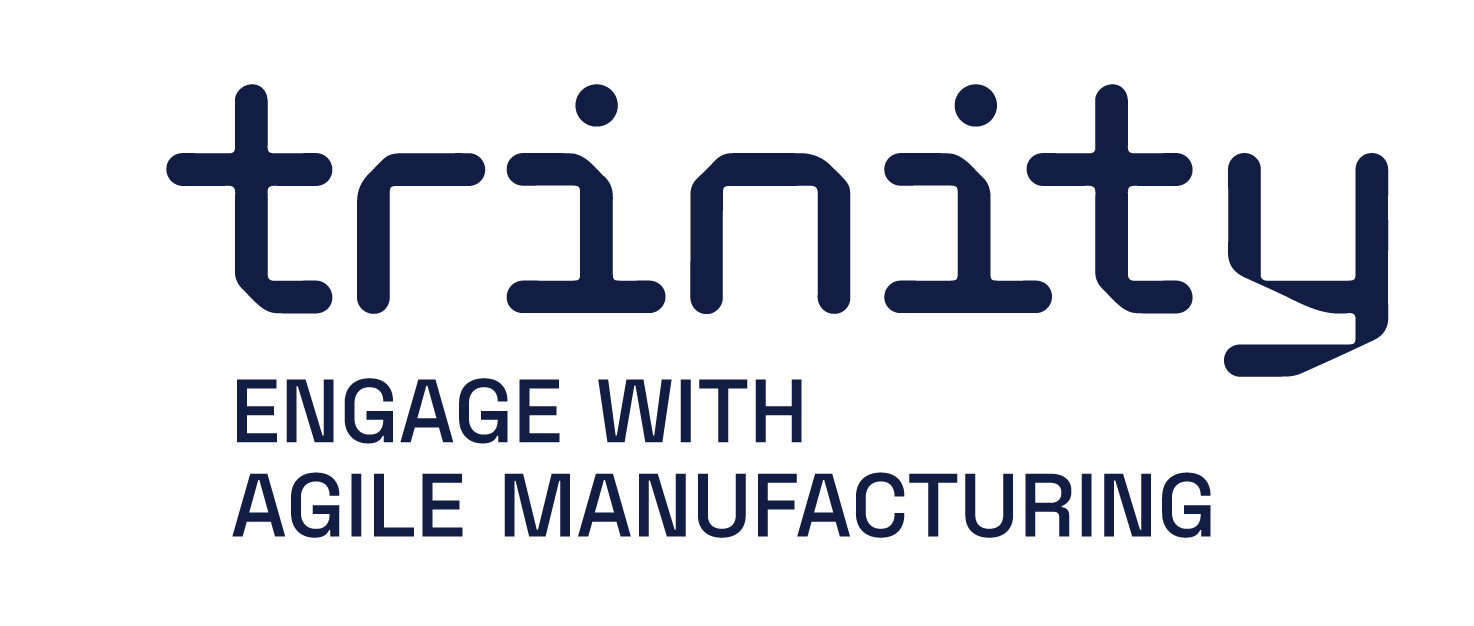Rapid Mapping Of A Production System In A Virtual Environment
Main functionalities
The module presents a method for rapid mapping of a production system in a virtual environment. The virtual model is created in a simulation program. The functionality of having a virtual copy of the physical production system is:
– Testing different types of layout in the current layout
– Optimizing the production
– Preform offline testing
Technical specifications
The module is divided into two parts: Scanning production line with an AIV and creating the virtual model
1. Scanning production line with an AIV:
First, the AIV is used to scan the factory. This allows for scanning of all the walls, machines and objects in the factory. After the scan is done a picture is created from the scan.
2. Create 3D model from the 2D map:
The second part uses the picture from the scan as a template for creating the virtual model. The picture is imported to simulation software and the walls and machines are placed in their respected spaces. The 3D models, such as walls machines are taken from the standard library in simulation software.

Fig 1. Lower part: scanned map of the production system. Upper part: 3D model of the production system
Inputs and outputs
Scanning of the production line with an AIV or similar tool to create a 2D map used to model the virtual environment for the production line in a simulation program.
Formats and standards
Formats: .PNG picture from the MiR map, .vcmx (Visual Components model)
Owner (organization)
The Owner of the demonstrator is: The Artic University of Norway (UiT) https://en.uit.no/startsida
The Arctic University of Norway is a medium-sized research university that contributes to knowledge-based development at the regional, national and international level. UiT is the third largest university in Norway and northernmost university in the world. UiTs study portfolio covers all classical subject areas from Health Sciences, Social Sciences, Education and Humanities, Science and Technology to Economics, Law, Social Work, Tourism, Sports and Fine Arts. While the key research areas cover the polar environment, climate research, indigenous people, peace and conflict transformation, telemedicine, medical biology, space physics, fishery science, marine bioprospecting, linguistics and computational chemistry.
Trainings
Training material is under production. The tutorial will show how an mobile robot can be used to create a digital twin of a physical environment. http://heinlein.mech.upatras.gr/trinity/create-a-virtual-production-line/
